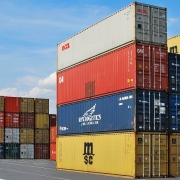What caused the Golden Age of Capitalism?
What is the Golden Age of Capitalism? The ‘Golden Age of Capitalism’ refers to a momentous period of economic growth that lasted from the end of World War Two in 1945 to the early 1970s. The economic recovery of Western Europe and East Asia had accelerated growth and expansion of the global economy. In this topic, we will find out what were the contributing factors that gave rise to this remarkable period of economic prosperity that improved the living standards of many countries.
Topic of Study [For H2 History Students]: Paper 1: Understanding the Global Economy (1945-2000) Section B: Essay Writing Theme II Chapter 1: Reasons for growth of the global economy
In the following section, we will cover some of the key reasons for the growth and development of the world economy.1. Post-War Economic Reconstruction [After 1945] Against the backdrop of a devastating war that left the affected countries in ruins, post-war economic reconstruction was of paramount importance to revive the industries. The emphasis on wartime production had affected the nature of industries [e.g. production of military supplies]. In particular, Western Europe and Japan were in poor shape due to the protracted military confrontations. As such, economic recovery was made possible through the provision of foreign aid, such as the United Nations Relief and Rehabilitation Administration (UNRRA) and the Marshall Plan.
With the substantial economic relief, these recipient countries revive their industries quickly. For example, Western European countries only required three years to restore pre-war production levels. By 1947, global industrial production was back to pre-war levels. As a result, the robust growth of developed countries contributed to higher consumption of goods and services. This development was then reinforced by the liberalisation of world trade.
2. Liberalisation of World Trade [General Agreement on Tariffs and Trade, 1947] During the Bretton Woods Conference of 1947, members of the United Nations (UN), including USA, deliberated on the creation of an international monetary system. This system was developed with the goal of ensuring financial stability at the global level. During the Conference, members planned to establish an International Trade Organisation (ITO) to set the rules and regulations for international trade. However, the plan failed to take shape. Nevertheless, a palatable alternative was formed, also known as the General Agreement on Tariffs and Trade (GATT).
Before the World Trade Organisation was formed in 1955, the GATT played the primary role of pushing for periodic bargaining, in terms of the removal of trade barriers between member nations. The reduction in tariffs, for example, enabled freer flow of resources and commodities, raising world output and propelling growth of the global economy.
3. Establishment of an International Financial System [Bretton Woods System, 1944] As mentioned earlier, the Bretton Woods Conference had the main aim of creating an international financial system to achieve financial stability. In the process, two financial international institutions were formed, namely the International Monetary Fund (IMF) and the World Bank.
Initially, the World Bank was named International Bank for Reconstruction and Development (IBRD). It was responsible for the provision of loans that supported post-war economic reconstruction, since the late 1940s. Subsequently, the World Bank aided developing countries in their goal of achieving economic and social progress.As for the International Monetary Fund (IMF), its role was to provide financial support to member countries and correct temporary payment imbalances. Members could access the financial support only if they met the requirements set by the IMF Articles of Agreement, which stipulated conditions, like the need to disregard foreign exchange controls. As a result, the IMF contributed to the freer flow of currencies between countries, promoting growth.
The third notable feature of the Bretton Woods System was the gold exchange standard that facilitated foreign exchange convertibility. From 1944 (Year of the Bretton Woods Conference) to 1971, all foreign currencies were pegged to the U.S. Dollar (USD). The USD was pegged to gold, specifically 35 USD per ounce of gold. Consequently, this gold exchange standard gave rise to the creation of foreign exchange markets that led to exchange rate stability. Hence, stable currency values boosted market confidence and promoted greater trading and investment activities. As such, the Bretton Woods System contributed to the remarkable growth of the global economy.
What’s Next? In view of the above-mentioned factors, it may appear that the seemingly-sustained period of economic prosperity could last indefinitely. However, from the 1970s onwards, the expansion and growth of the global economy began to slow down. In the next issue, we will discuss the problems of the global economy, such as the twin oil shocks of the 1970s. To support your revision, consider these questions: – How did the United States contribute to the growth of the global economy? – Which was more important: The Bretton Woods system or the liberalisation of world trade [to be discussed in class]
The H2 and H1 History Tuition feature online discussion and writing practices to enhance your knowledge application skills. Get useful study notes and clarify your doubts on the subject with the tutor. You can also follow our Telegram Channel to get useful updates. We have other JC tuition classes, such as JC Math Tuition and JC Chemistry Tuition. For Secondary Tuition, we provide Secondary English Tuition, Secondary Math tuition, Secondary Chemistry Tuition, Social Studies Tuition, Geography, History Tuition and Secondary Economics Tuition. For Primary Tuition, we have Primary English, Math and Science Tuition. Call 9658 5789 to find out more.










